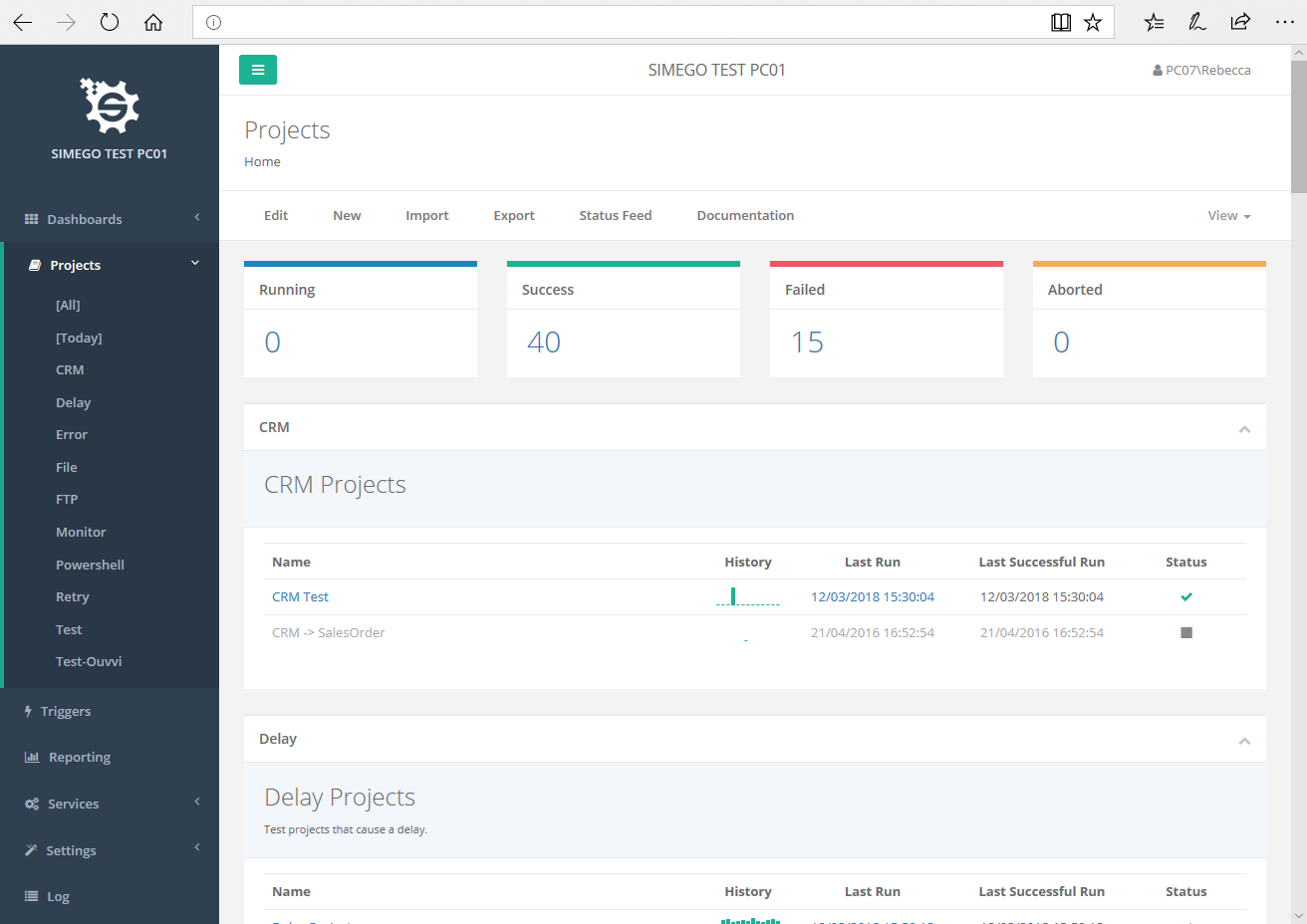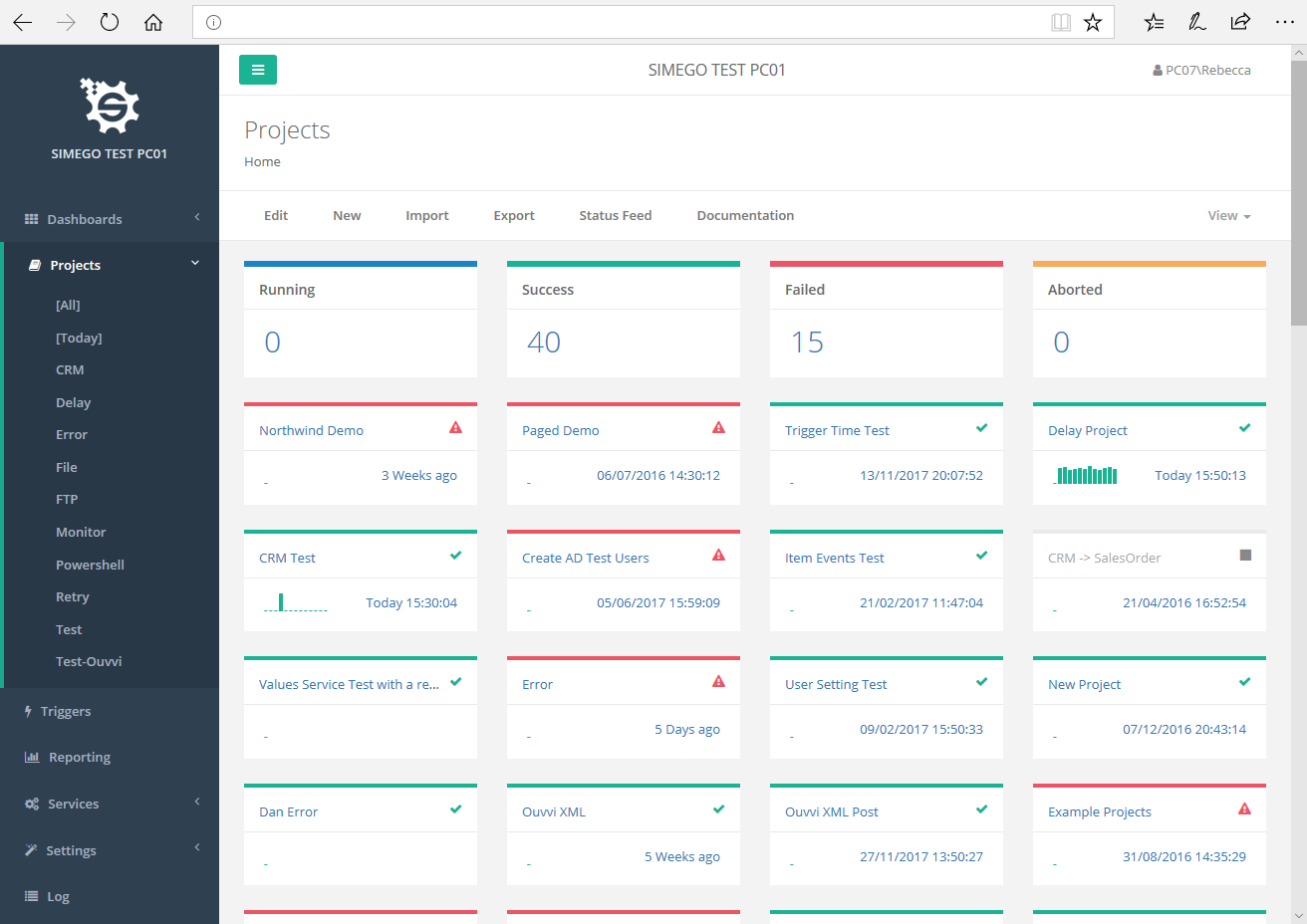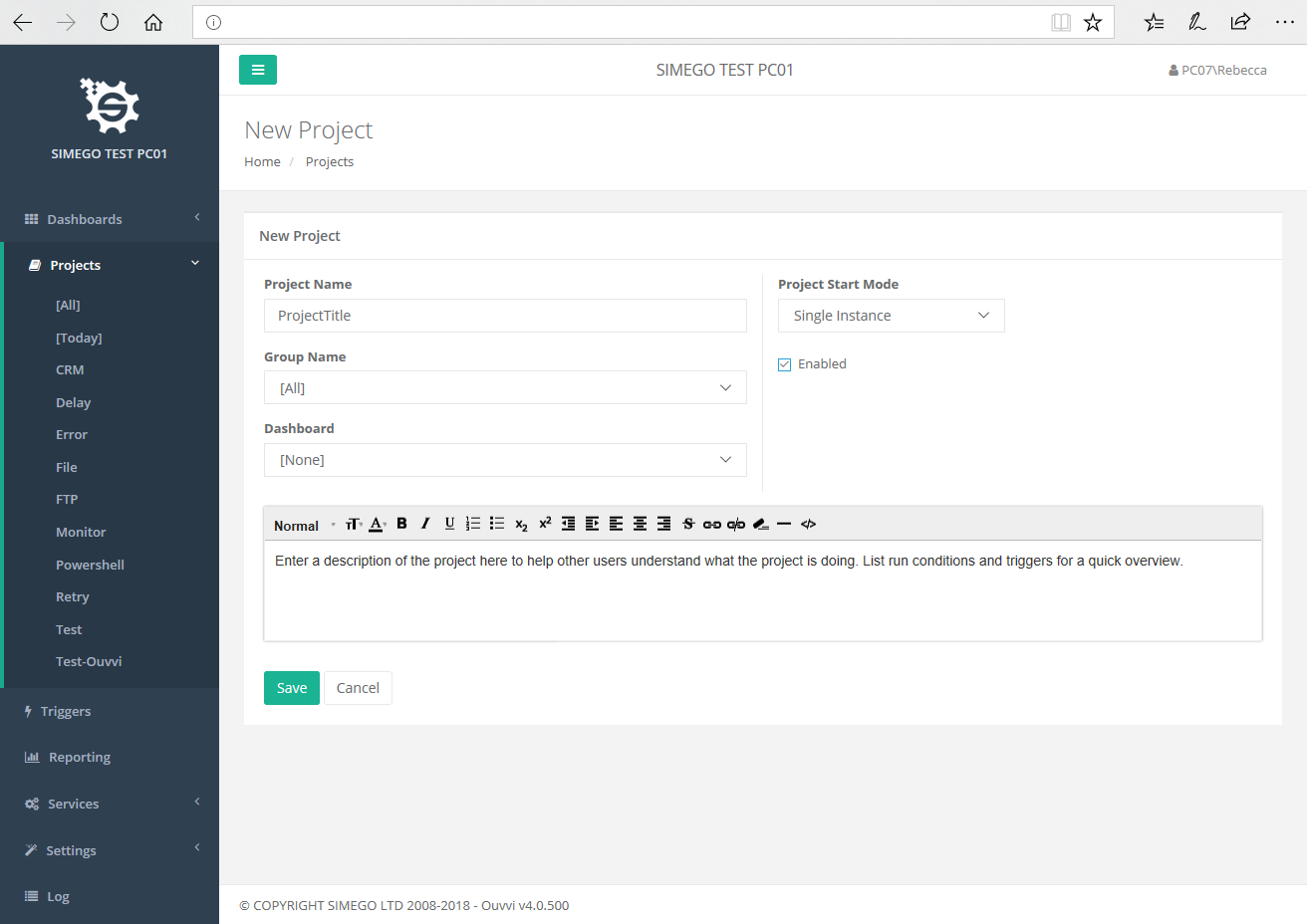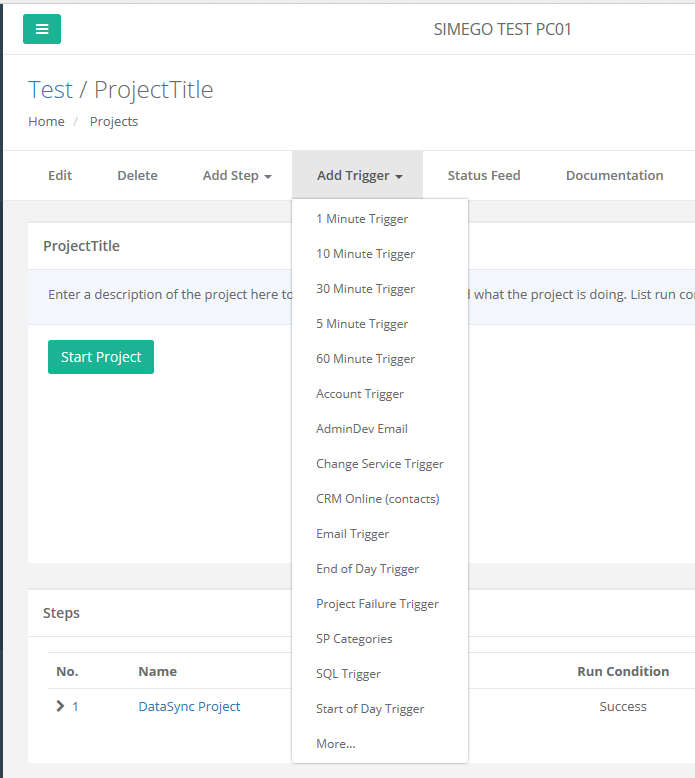Projects
Projects in Ouvvi are a container for tasks (steps) that run in a sequence as each step completes it moves on to the next. The Run Condition provides flow control where a Step will only run if the Running Status equals the Run Condition. This flow control prevents running steps when the previous step returns an error by setting the Run Condition to Success
Each Step is of a particular task type this might be a Data Sync task, a file copy task an API call etc.
Each step can be configured to automatically re-try this solves most temporary errors where an external service may be unavailable or recovering from a failure.
The Project also contains the Log details for each run of the project so you can navigate the history to inspect the log data for each run of the project.
Change the Layout
The Project page layout can be changed between a List view and a Card View by using the drop down menu at the right of the navigation panel.

List View
The list view will show the Project Groups first and then any un-grouped projects are shown in a list at the bottom of the page.

Card View
The Card View will show all projects as separate cards, these are colour coded to show the status of the project at a quick glance. The projects can be filtered into their user defined groups by using the main navigation to the left of the screen.

Create New Project
To create a new Ouvvi project click on the New button in the Projects page view.

You then need to give your project a Name and click Save

Video
Demo showing how to create a new Ouvvi Project. Setting up a Data Sync Project from Ouvvi to transfer Data from a SharePoint list to Dynamics Online, and then schedule this to run on a time based trigger.
Properties to Define
| Property | Value |
|---|---|
| Name | Name of your Project. |
| Group Name (optional) | Group to assign project to. |
| Dashboard (optional) | Dashboard to pin your project to. |
| Project Start Mode | Single Instance - only one instance of the project active at any one time this is the default for Data Sync projects. If a request is started whilst the project is running, the request is added to the queue and waits until the current run is completed. Normal - Multiple instances can run in parallel this is not recommended for Data Sync projects. Single Instance System - Same as single instance except the start button is removed. Prevents manual starting of a project and is used when you have a project called from another whilst passing required context value/s. |
| Description | A description about the project recommended so that you remember what the project is for and helps with documentation. |
Start Project
If the Service is installed and running you can manually start the project by clicking the Start Project button. This button is disabled if the project is already running or when the Ouvvi Service is not running.

Schedule
To run the project on a schedule Add Trigger to the project for example the 10 minute Trigger. If there is no suitable trigger available create a new Trigger under Triggers. Triggers can be reused across projects and each project assigned will be started when the trigger runs. Adding multiple triggers like 10,30 and 60 minute triggers will only trigger the project once on the trigger interval.

Start a project by calling the URL
Ouvvi includes the ability to run a project by calling a specific url.
You will need the following details:
1 - The URL or your Ouvvi console eg: http://OuvviServer1
2 - The Id of your project you want to run.
Find the specific Project ID
Open up Ouvvi and select the project you want to be triggered:

Looking in the URL you can find the ID of the project at the end of the URL. The id in this case is 3.
Create the URL and Test
To create the URL, add the Ouvvi server URL http://OuvviServer1 to the run section /projects/start/ and then the ID of the project giving in this case:
http://ouvviserver1/projects/start/3
You can then test this by pasting the URL into an empty browser window and checking if the project has run.
